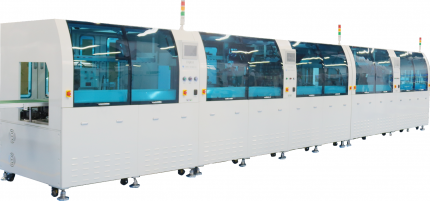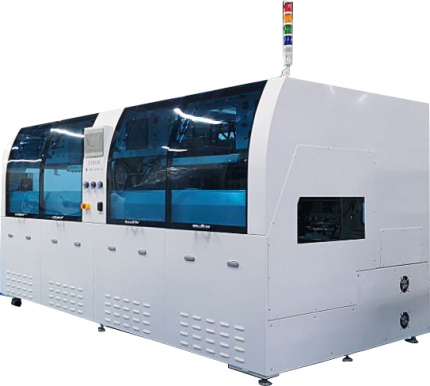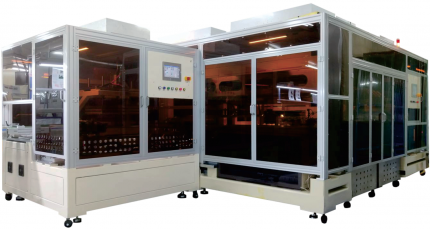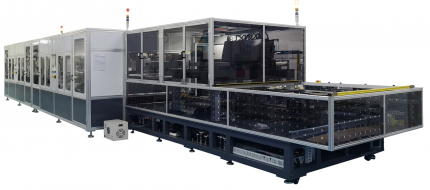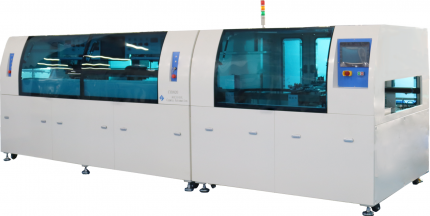TV Display Manufacturing
TV display manufacturing encompasses several processes aimed at producing high-quality display panels suitable for televisions of various sizes and resolutions. The manufacturing process typically includes the following steps:
- Substrate Preparation: The process begins with preparing the substrate, which serves as the base for the display panel. Common substrates include glass and flexible materials like plastic or polymer films.
- Thin-Film Deposition: Thin-film deposition techniques, such as physical vapor deposition (PVD) and chemical vapor deposition (CVD), are used to deposit layers of materials onto the substrate to form the different components of the display, including transistors, electrodes, and pixel elements.
- Photolithography: Photolithography is employed to pattern the thin-film layers on the substrate accurately. This process involves applying a photoresist material to the substrate, exposing it to light through a mask, and then developing the patterned layers.
- Etching: Etching processes are used to selectively remove unwanted material from the thin-film layers, defining the features and structures of the display components.
- Assembly and Encapsulation: Once the display panel components are fabricated, they are assembled and encapsulated to protect them from environmental factors such as moisture and mechanical stress. Additional layers, such as color filters and polarizers, may be attached to enhance the display quality.
- Testing and Quality Control: Finished display panels undergo rigorous testing to ensure they meet performance specifications and quality standards. This includes testing for defects, uniformity, brightness, color accuracy, and response times.
- Packaging and Shipping: After passing quality control tests, the display panels are packaged and prepared for shipment to TV manufacturers for integration into television sets.
Types of TV Displays:
- LED-LCD (Light-Emitting Diode Liquid Crystal Display): LED-LCD TVs use a backlight system consisting of light-emitting diodes (LEDs) to illuminate an LCD panel. They offer high brightness, energy efficiency, and vibrant colors. LED-LCD TVs are available in various resolutions, including Full HD (1080p), 4K Ultra HD, and 8K Ultra HD.
- OLED (Organic Light-Emitting Diode): OLED TVs feature self-emissive pixels that emit light when an electric current is applied, eliminating the need for a separate backlight. This results in perfect blacks, infinite contrast ratios, and wide viewing angles. OLED TVs deliver exceptional picture quality and are available in 4K and 8K resolutions.
- QLED (Quantum Dot Light-Emitting Diode): QLED TVs use quantum dot technology to enhance color reproduction and brightness. They feature a backlight system powered by LEDs combined with quantum dots, resulting in vivid colors and improved HDR performance. QLED TVs are available in 4K and 8K resolutions.
- MicroLED: MicroLED TVs utilize an array of microscopic LEDs to create individual pixels, offering superior brightness, contrast, and energy efficiency. MicroLED technology is still in the early stages of commercialization but holds promise for future high-end TV displays.
- Mini-LED: Mini-LED TVs feature a backlight system composed of thousands of miniaturized LEDs, enabling precise local dimming and improved HDR performance. Mini-LED technology offers enhanced contrast and brightness compared to traditional LED-LCD TVs.
- Plasma: Plasma TVs use tiny cells filled with gas that emit ultraviolet light when electrically charged, creating the image on the screen. While once popular, plasma TVs have largely been replaced by LED-LCD and OLED TVs due to advancements in display technology and manufacturing.
- LCD (Liquid Crystal Display): LCD TVs utilize a backlight system and liquid crystal technology to produce images. While older LCD TVs were common before the widespread adoption of LED backlighting, modern LCD TVs are typically LED-LCD models.


